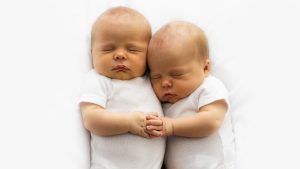Cells: Master Architects of Life

A 19th century Austrian monk by the name of Gregor Mendel founded the science of genetics. Since that time, DNA (deoxyribonucleic acid) has been widely accepted as the “architects of our bodies,” the carrier of genetic information. However, not so according to the new science of the cell conducted by developmental biologist Alfonso Martinez Arias. Arias says we’ve got it all wrong. He believes that “What makes you and me individual human beings is not a unique set of DNA but instead a unique organization of cells and their activities.” In his new book, The Master Builder: How the New Science of the Cell Is Rewriting the Story of Life, Arias explains that not DNA but cells are the master architects of life. “Far from being the blueprint for an organism, genes are mere tools used by life’s true expert builders: cells.”
Karen’s Story
Arias uses many stories throughout his book to support his findings. Among them is the story of a 52-year-old woman, Karen Keegan. Her story clearly shows that it’s not unique DNA, but a unique organization of cells and their activities that make us all different.
Karen needed a new kidney. As a mother of three adult children, both she and her doctors were confident they would find a match. Each child would share half of their DNA with Karen, making them all possible donors. A test would reveal the best match.
However, test results indicated that two of her sons could not be hers because they didn’t have enough DNA in common with Karen. Karen knew this wasn’t true. Her doctors knew that the chances of a mix-up at birth with not one but two of Karen’s children were impossible. And it was unlikely that there had been a mix-up with the lab testing.
Karen’s doctor, on a hunch, tested her blood sample against some tissue from another part of Karen’s body. The result was that Karen had two DNA sequences in her cells – not one.
Two Groups
Karen’s mother, it turns out, had originally been pregnant with twins – two groups of cells – each with its own DNA. At some point during the early stages, the two groups of cells fused into one. With cells from both groups, that one group developed into Karen. Both cell groups were randomly distributed throughout her body. While one group of cells was predominant, her sons came from eggs generated by the other group of cells.
Karen is a natural chimera, which is a person who carries more than one complete genome. She is not alone with an estimated 15% of people alive today being chimeras.
As such, Karen is not defined by a single DNA sequence. That proves that our DNA does not define who we are.
Cells at Work
While Arias has his critics, he is quick to point out that cells have powers that DNA does not. Cells can “measure the length of your arms and instruct the placement of your eyes symmetrically across the midline of your face.” We know that DNA cannot do things such as these because all cells of an organism generally have the same DNA.
According to the study, cells can do a great deal including sending orders and measuring lengths. In chimeras, cells work with the differences between the two sets of DNA coming together to create one body.
Arias simplifies it for us. “To do their masterful handiwork, cells use genes, choosing which will or will not be turned on and expressed to determine when and where the products of genes are deployed. An organism is the work of cells. Genes merely provide materials for their work.”
Innate Intelligence
At The 100 Year Lifestyle, we trust in the body’s innate intelligence. We know that this intelligence is with us from the moment we are conceived until our last breath of life. With that in mind, it’s humbling to realize just how amazing the human body is, and how much we have yet to understand.
Learning more about the miracle that is your body should inspire you to live at 100% for 100 years or more! Trust your innate intelligence. Find a 100 Year Lifestyle provider to help you on your journey today!
- SHARE THIS POST







